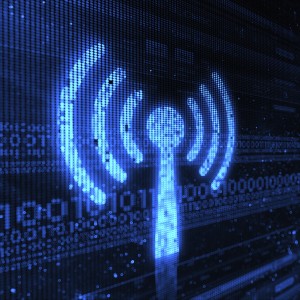What’s the difference between Wi-Fi and unlicensed spectrum?
 Ask the Engineer: What’s the difference between Wi-Fi and unlicensed spectrum?
Ask the Engineer: What’s the difference between Wi-Fi and unlicensed spectrum?
Answer: Wi-Fi is a particular service that uses unlicensed spectrum, but there are others as well. As the FCC puts it:
Low-power, non-licensed transmitters are used virtually everywhere. Cordless phones, baby monitors, garage door openers, wireless home security systems, keyless automobile entry systems and hundreds of other types of common electronic equipment rely on such transmitters to function. At any time of day, most people are within a few meters of consumer products that use low-power, non-licensed transmitters.
This is annoying for Wi-Fi users, because the closer the non-licensed transmitter, the greater chance there is for interference. But it’s perfectly legal under FCC regulations.
The FCC’s rules for spectrum use govern transmitters and frequencies, and in some cases they require that a particular frequency can only be used for a specific purpose; you can’t transmit on 740 kilohertz, for example, without a license, and you can’t get a license for that band unless you’re operating an AM radio station.
Similarly, you can’t transmit in the 1850-1990 Mhz band unless you’re providing a PCS mobile broadband service, which the FCC’s regulations define as fixed or mobile communications services, excluding “broadcasting”. PCS also requires a license.
Wi-Fi uses unlicensed spectrum, open to use by any device that has been certified by the FCC as conforming to its Part 15 rules on transmitted electromagnetic energy. The certification process is easy and cheap compared to licensing, but it’s not a complete free-for-all. Device manufacturers obtain the certifications, so we consumers are free to use their products without much hassle.
The certification process doesn’t dictate how the device operates at a great level of detail. It doesn’t say, for example, that a Wi-Fi device needs to be certified by the Wi-Fi Alliance, the trade association of Wi-Fi vendors that holds the trademark rights on the term “Wi-Fi”, but it’s a good idea to look for the Wi-Fi Alliance sticker when you buy a router. Wi-Fi Alliance certifies devices, but the rules for Wi-Fi are created by a different organization, the IEEE Standards Association. The term 802.11 relates to the IEEE standards.
The design work on 802.11 started in 1990, when high-speed wireless networking was 1 – 2 Mbps; today’s Wi-Fi networks can run at speeds in excess of 1000 Mbps. The basic method of operation for Wi-Fi is for devices to listen before they talk, and only to talk when other devices are silent. The period of silence that has to be observed is a function of how far the most distant signal has to travel before it can be detected, which isn’t sensitive to data rate.
In the old days, this time interval was set at about 2000 feet, which seemed consistent with what would happen to a radio signal that complies with the FCC’s power limits. The duration of transmissions was then determined as a ratio of the silent time to come up with a reasonable degree of efficiency. You don’t want to listen for more than 20% of the time you’re allowed to talk.
Higher speeds have blown this calculation out of whack, however. In the old days, we transmitted a few hundred bytes each time we could, and today we can transmit up to a million bytes in one go. This is fine for video streaming, but it’s not so good for making phone calls.
This is to say that “listen before talk” worked fine at tens of Mbps, but it’s horrible at the hundreds and thousands of Mbps we’re using today. So it has now become necessary to ditch listen before talk and use an entirely different method.
One approach is to use something called “Space Division Multiple Access” (SDMA) that tailors signals to unique pairs of devices and ideally hides them from others. Another approach is to use Code Division Multiple Access (CDMA) that subdivides spectrum in a different way, and is used in cellular networks.
The most promising direction for the use of unlicensed spectrum is a proposal by Qualcomm called “LTE Advanced in unlicensed spectrum” (LTE-U), a variation on the LTE system used by 4G smartphones. LTE-U combines all of the most advanced signal processing techniques in a package that doesn’t require licenses but is compatible with licensed 4G and 5G systems. It resolves the inefficiency of listen before talk by going to a more organized network.
One of the beauties of LTE-U is that it doesn’t depend on any changes by the FCC to its existing certification process or its rules. It won’t comply with Wi-Fi Alliance standards, but that’s OK since a new organization called LTE-U Forum will take its place. LTE-U devices have already begun to appear.
Wi-Fi devices aren’t going to disappear any time soon, but the future of unlicensed spectrum for wireless broadband will probably belong to LTE-U. It’s just better all around.



